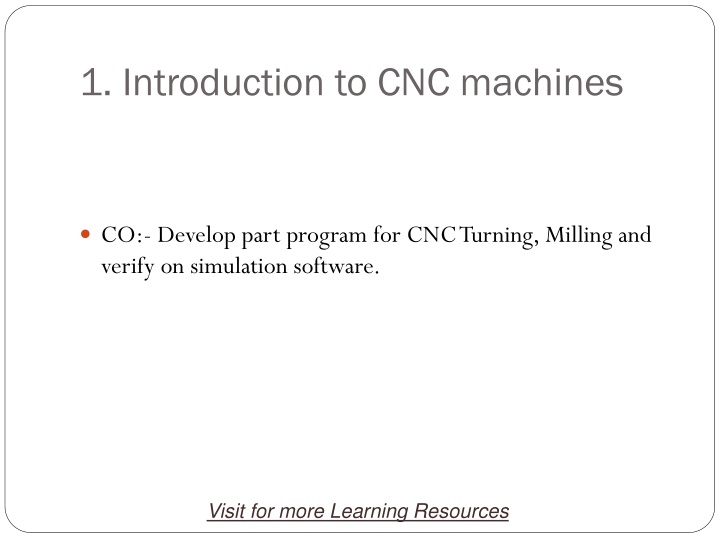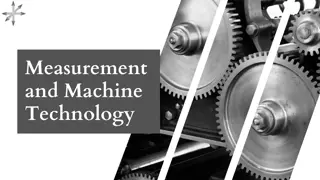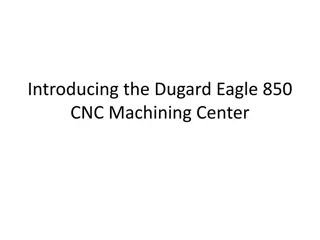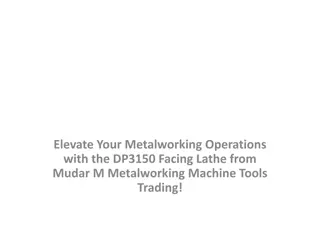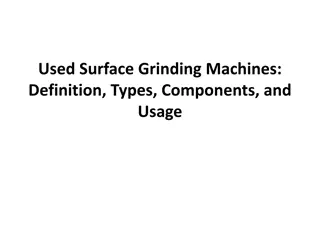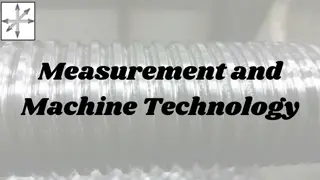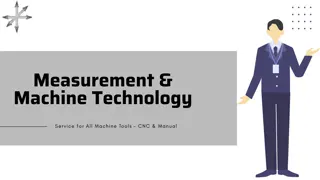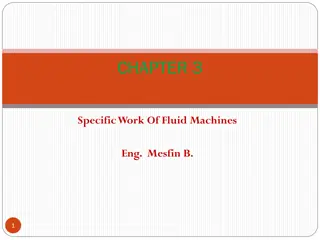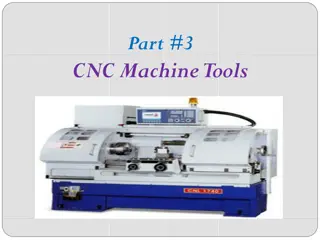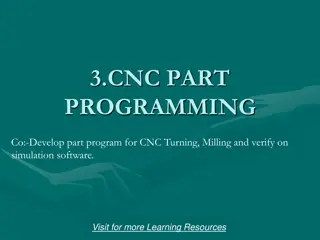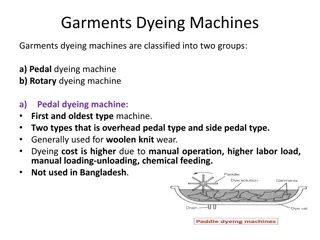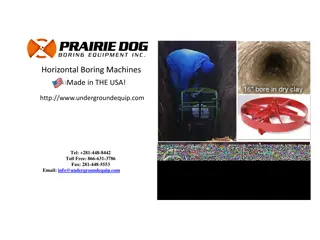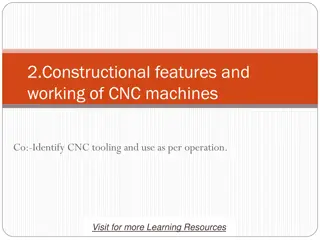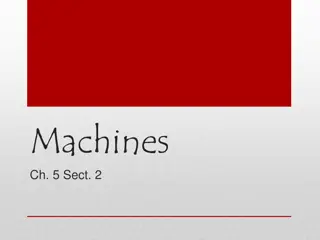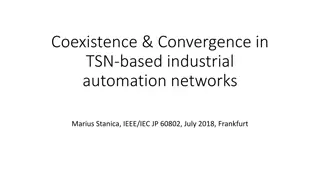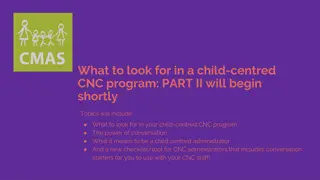Comprehensive Guide to CNC Machines and Operations
CNC machines, powered by automated commands, revolutionize modern manufacturing with precision and efficiency. Explore CNC turning, milling, and more operations along with advantages, disadvantages, and axis configurations. Discover the world of CNC technology for intricate machining tasks and batch production with high accuracy while considering the training and skills needed.
Download Presentation

Please find below an Image/Link to download the presentation.
The content on the website is provided AS IS for your information and personal use only. It may not be sold, licensed, or shared on other websites without obtaining consent from the author.If you encounter any issues during the download, it is possible that the publisher has removed the file from their server.
You are allowed to download the files provided on this website for personal or commercial use, subject to the condition that they are used lawfully. All files are the property of their respective owners.
The content on the website is provided AS IS for your information and personal use only. It may not be sold, licensed, or shared on other websites without obtaining consent from the author.
E N D
Presentation Transcript
1. Introduction to CNC machines CO:- Develop part program for CNC Turning, Milling and verify on simulation software. Visit for more Learning Resources Visit for more Learning Resources
Contents Introduction to CNC Operations in CNC Advantages and Disadvantages of CNC Axis selection 5 Axis CNC Advantages and application of 5 axis Types of machine configurations for 5-axis machining Specification of a 5 axis CNC machine 2
Introduction to CNC Numerical control (NC) is the automation of machine tools that are operated by precisely programmed commands encoded on a storage medium, as opposed to controlled manually. Most NC today is computer numerical control (CNC), in which computers play an integral part of the control. In modern CNC systems, end-to-end component design is highly automated using computer-aided design (CAD) and computer-aided manufacturing (CAM) programs. 3
Operations in CNC CNC Milling CNC Plasma Cutter CNC Electric Discharge Machining 4
Other CNC Operations are:- CNC Water Jet Cutter Drilling Sheet metal works (Turret punch) Wire bending machines Surface grinders Cylindrical grinders submerged welding Glass cutting 6
Advantages of CNC CNC machines can be used continuously Batch production with high accuracy can be updated by improving the software Training in the use of CNCs is available through the use of virtual software . Intricate detail machining no need to make a prototype or a model One person can supervise many CNC machines simultaneously saves time 7
Disadvantages more expensive than manually operated machines The CNC machine operator only needs basic training and skills, enough to supervise several machines. In years gone by, engineers needed years of training to operate centre lathes, milling machines and other manually operated machines. This means many of the old skills are been lost. Investment in CNC machines can lead to unemployment 8
From 3 From 3- -axis to 5 axis to 5- -axis machining axis machining whole geometry overlapping views lead to surface quality problems More number of lead-in and out movements dozens of views need to be defined more tool movements programming is quite difficult sum of all views does not cover the finishing process for very deep part and having narrow cavities results in a bad surface quality and long machining times in Case of harder material not sufficient for the complete 10
Five Axis CNC Five Axis CNC 11
ADVANTAGES OF 5 AXIS CNC ADVANTAGES OF 5 AXIS CNC to machine complex shapes in a single setup reduces the machinist setup time and increases production rates By eliminating multiple set-ups, time and errors are reduced the feature-to-features accuracy is improved because the same zero or datum reference frame is used throughout the manufacturing process since simultaneous movement is allowed along the X and Y axis, shorter and more rigid tools may be used higher spindle/cutting tool speeds may be achieved while reducing the load on the cutting tool Shorter and thicker cutters also reduce vibration when machining deep pockets or contoured features with three-axis machines. 12
Application Application complex three dimensional profiles for impellers, turbine blades, and plastic mold tools 13
Types of machine configurations for 5- axis machining Swivel Head with Rotary Table Traveling Column Integrated Trunnion Table 14
Specification of a 5 axis CNC Machine Manufacturers HURCO TARUS CMS north America OKUMA CNC TAKANG Taiwan maximart corporation YCM (YEONG CHIN MACHINERY INDUSTRIES CO., LTD ) 15
Specification cont TARUS TPGM5X1083 SPECIFICATIONS Parameters X Axis Travel 3048 mm Y Axis Travel 2540 mm Z Axis Travel 1117 mm Space between columns 3886 mm Workable size,L*W 3568 mm*2235 mm X , Y and Z axis maximum feed rate 30m/min A axes tip +/-100 degrees C axis tip Continuous A and C axis positioning peak torque 4073 NM A and C axis positioning Feed 30 degrees per second HSK 63A, 0-20,000 RPM (3 axis and 5 axis milling) 4,000 RPM base speed 70 NM constant torque,160 NM peak torque 29 KW rated power .013 mm , 0.006 mm, 0.005 mm Milling Spindle Linear Accuracy (X,Yand Z) 16
CONTENTS 1. History 2. CNC Introduction 3. how they look like? 4. Elements of CNC 5. Block diagram of CNC 6. How CNC Works? 7. Features of CNC Machines 8. CNC Programming Basics 9. Common Format of a Block 10. Programming Key Letters 11. Table of important G-codes 12. Table of important M-codes 13. Advantages 14. Challenges 15. Conclusion 16. References
History The first NC machines were built in the 1940s and 1950s by Prof. John T Parson. CNC machine came into existence after evolution of computer around 1980. Modern CNC Machine are improving further as the technology is changing with a variety of functions according to applications.
CNC Introduction A numerical control system in which the data handling, control sequences, and response to input is determined by an on-board computer system at the machine tool.
CNC Machines- How do they look like? cnc-machine-m3x-3s Servo Motors Display Console Coolant control Automated Tool changer Slides Controller Controller Chip collection and removal
Elements of CNC Machine A CNC machine consist of following 6 major elements: i. Input Device ii. Machine Control Unit iii. Machine Tool iv. Driving System v. Feedback Devices vi. Display Unit
Open loop and Closed loop controls Open loop and Closed loop controls cnc_f7 In open loop systems the slide may overshoot or may not reach desired position because of inertia, wear and tear and friction, hence inaccurate machining. In closed loop systems the position sensors are used to correct slide movements and achieve higher accuracy and repeatability
How CNC Works Controlled by G and M codes. These are number values and co-ordinates. Each number or code is assigned to a particular operation. Typed in manually to CAD by machine operators. G & M codes are automatically generated by the computer software.
Features of CNC Machinery The tool or material moves automatically. Tools can operate in 1-5 axes. Larger machines have a machine control unit (MCU) which manages operations. Movement is controlled by motors (actuators). Feedback is provided by sensors (transducers) Tool magazines are used to change tools automatically.
CNC Programming Basics CNC instructions are called part program commands. When running, a part program is interpreted one command line at a time until all lines are completed. Commands, which are also referred to as blocks, are made up of words which each begin with a letter address and end with a numerical value.
CNC programming CNC programming Programming consists of a series of instructions in form of letter codes Important things to know: Coordinate System Preparatory Codes: G codes- Initial machining setup and establishing operating conditions N codes- specify program line number to executed by the MCU Units, incremental or absolute positioning Coordinates: X,Y,Z, RX,RY,RZ Axis Codes: X,Y,Z Used to specify motion of the slide along X, Y, Z direction Feed rate and spindle speed Coolant Control: On/Off, Flood, Mist Feed and Speed Codes: F and S Specify feed and spindle speed Tool Control: Tool and tool parameters Tool codes: T specify tool number Miscellaneous codes M codes For coolant control and other activities
Common Format of a Block Common Format of a Block Sequence # Preparatory Function Dimension Words Feed Rate Spindle Function Tool Function Misc. Function N50 G90 G01 X1.40Y2.25 F10 S1500 T01 M03 Individual Words
Programming Key Letters O - Program number (Used for program identification) N - Sequence number (Used for line identification) G - Preparatory function X - X axis designation Y - Y axis designation Z - Z axis designation R - Radius designation F Feed rate designation S - Spindle speed designation H - Tool length offset designation D - Tool radius offset designation T - Tool Designation M - Miscellaneous function
Table of Important G codes G00 Rapid Transverse G01 Linear Interpolation G02 Circular Interpolation, CW G03 Circular Interpolation, CCW G17 XY Plane,G18 XZ Plane,G19 YZ Plane G20/G70 Inch units G21/G71 Metric Units G40 Cutter compensation cancel G41 Cutter compensation left G42 Cutter compensation right G43 Tool length compensation (plus) G43 Tool length compensation (plus) G44 Tool length compensation (minus) G49 Tool length compensation cancel G80 Cancel canned cycles G81 Drilling cycle G82 Counter boring cycle G83 Deep hole drilling cycle G90 Absolute positioning G91 Incremental positioning
Table of Important M codes M00 Program stop M01 Optional program stop M02 Program end M03 Spindle on clockwise M04 Spindle on counterclockwise M05 Spindle stop M06 Tool change M08 Coolant on M09 Coolant off M10 Clamps on M11 Clamps off M30 Program stop, reset to start
Advantages of CNC i. - Easier to program; ii. - Easy storage of existing programs; iii. - Easy to change a program iv. - Avoids human errors v. - CNC machines are safe to operate vi. - Complex geometry is produced as cheaply as simple ones vii. - Usually generates closer tolerances than manual machines
Challenges Costly setup, skilled operators Computers, programming knowledge required iii. Maintenance is difficult i. ii.
Conclusion The advantage of a CNC system are that the operation of a conventional machine is removed and the part production is made automatic. It reduces the labor work and hence highly efficient in the manufacturing process. BHEL generally uses CNC machines to achieve its manufacturing targets. For manufacturing works of large scale it is very difficult to work with manual machines as they are time consuming. CNC machines have their wide scope because they are easy to handle, the work becomes easier and jobs are done with perfection.
Thank You For more detail contact us For more detail contact us
